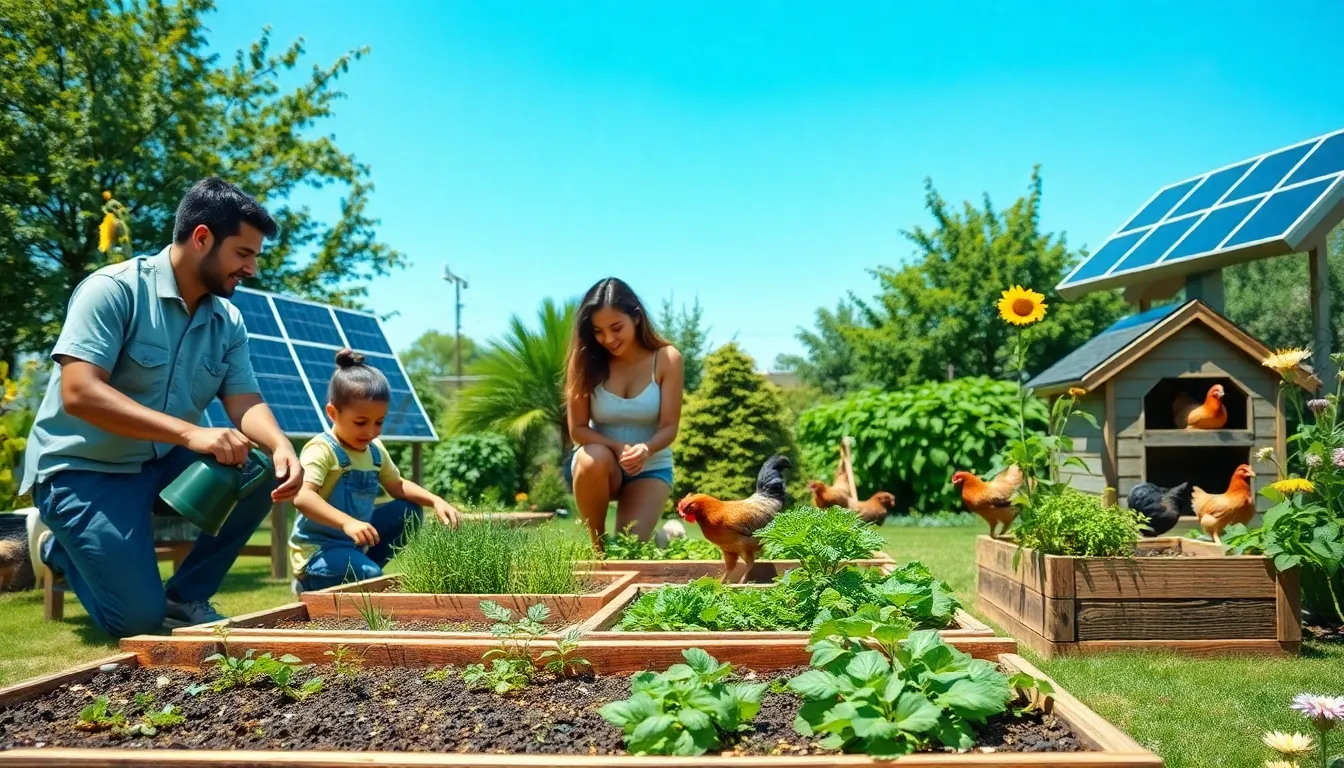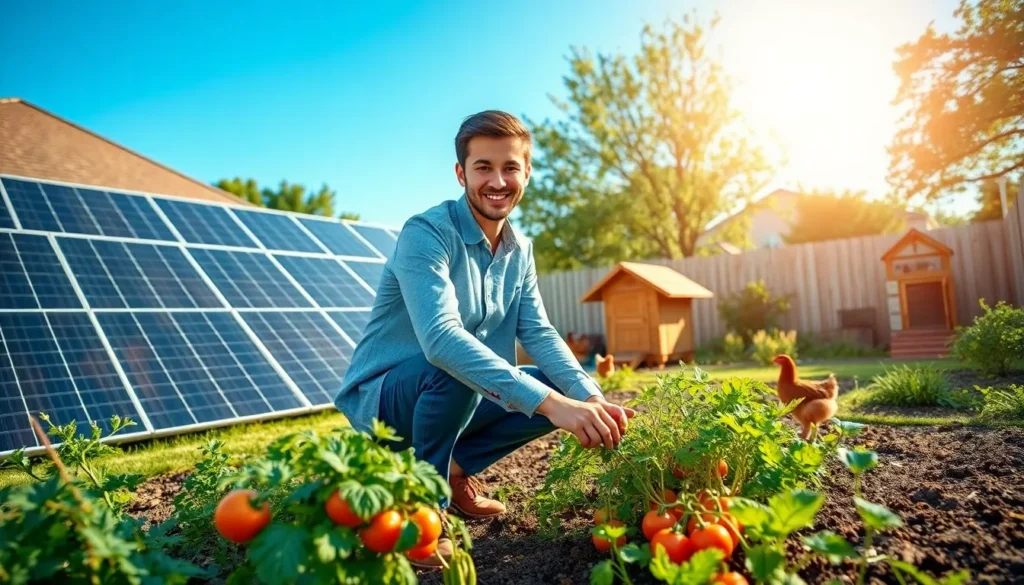Table of Contents
ToggleIn a world racing toward urbanization, self-sustainable living emerges as not just a trend, but a pressing necessity. Imagine waking up to the sound of birds rather than traffic, sipping coffee made from beans you grew yourself. Sounds dreamy, right? The jokes on those stuck in the endless cycle of supermarket runs. With a little foresight and creativity, anyone can transition to a lifestyle that harmonizes with nature while boosting personal independence. What’s the catch? Well, it’s about understanding how to balance modern conveniences with eco-awareness. Let’s jump into the rich world of self-sustainable living, where every choice can be a small revolution.
Understanding Self Sustainable Living

Self-sustainable living refers to a lifestyle where individuals or families strive to be self-sufficient, using resources from their environment to meet their needs. This practice minimizes reliance on external systems, be it food supply chains or energy sources. At its core, self-sustainability is about balance, creating a harmonious relationship with the environment while ensuring basic needs are met. Think of it as a fusion of modern life and agrarian roots. Those engaging in self-sustainable living often cultivate their gardens, harness solar energy, or even raise livestock. It’s an approach to life that encourages resourcefulness, responsibility, and a dash of creativity. Understanding these principles is the first step toward a more independent existence.
Benefits of Self Sustainable Living
Choosing self-sustainable living offers a treasure trove of benefits, both tangible and intrinsically fulfilling. Firstly, there’s the cost factor. By growing one’s own food and generating energy, individuals often witness a noticeable reduction in utility bills. Secondly, self-sustainable practices can lead to healthier lifestyles. Homegrown produce is free from harmful pesticides and full of vital nutrients. Not to mention, engaging with nature often leads to improved mental well-being. Is that enough motivation? Not quite. There’s also the significant environmental impact. By minimizing waste and opting for renewable resources, self-sustainable living actively contributes to reducing carbon footprints. Finally, let’s not overlook the sense of community. Many who embrace this lifestyle often find themselves engaging with like-minded individuals, creating networks of support and shared resources. It’s not just a solo adventure, it’s about cultivating relationships.
Key Components of Self Sustainable Living
Understanding key components is essential for anyone interested in self-sustainable living. First and foremost, food production stands as a pillar of the lifestyle. Cultivating a garden allows individuals to grow their own fruits and vegetables, fostering gardening skills along the way. Alongside this, energy independence plays a critical role. Many turn toward solar panels or wind turbines to supply power. Rainwater harvesting, another vital component, helps in collecting water for irrigation and domestic use. Waste management and composting can also not be overlooked, enabling the return of nutrients back to the soil while minimizing landfill contributions. Also, small-scale livestock, such as chickens or goats, play a dual role, providing companionship and fresh eggs or milk. With these components, individuals can weave a rich tapestry of self-sustainability.
Practical Steps to Achieve Self Sustainability
Embarking on a self-sustainable journey requires actionable steps, each one paving the way to independence. Start with an assessment of available resources. This analysis can help one understand the local climate, soil quality, and available space for gardening. Next, individuals should begin small, planning a vegetable patch rather than an entire farm can prevent overwhelm. Incorporating permaculture principles, such as companion planting and crop rotation, can enhance productivity. Besides, adopting renewable energy sources is crucial. Investing in solar panels or even simple solar-powered garden lights can make a significant difference. Waste reduction is also vital. Practicing recycling and composting can lead to a notable decrease in household waste. Finally, continuous education is essential: attending workshops, joining community groups, or even conducting online research can provide the necessary knowledge and support.
Challenges and Solutions in Self Sustainable Living
While the benefits of self-sustainable living are compelling, it’s crucial to acknowledge the challenges that can arise. One primary hurdle is the initial setup cost. Solar panels or starting a garden may require a significant upfront investment. But, solutions abound: many local governments offer grants or subsidies for renewable energy projects. Time commitment also poses a challenge. Developing sustainable habits requires consistent effort, a shift that can seem daunting. A practical approach is to integrate sustainability gradually, rather than all at once. For instance, one might start backyard composting on weekends before diving into full-scale gardening. Besides, climatic conditions can impact sustainability efforts. Those in harsher climates might face limitations in food production. To combat this, exploring greenhouse gardening or choosing resilient crop varieties can help overcome these environmental obstacles.
Future of Self Sustainable Living
The future of self-sustainable living appears bright, driven by increasing awareness of environmental issues and the growing desire for autonomy. Technological advances are likely to play a pivotal role in making self-sustainability more achievable. Innovations in vertical gardening, hydroponics, and smart technology can offer urban dwellers solutions for sustainable living, a vital factor in densely populated areas. Also, with climate change making headlines, many communities are prioritizing local food systems, promoting urban farming initiatives and farmers’ markets. Education is also evolving: sustainability courses are becoming increasingly popular at schools and universities, creating a new generation of eco-conscious individuals. As more people recognize the significance of sustainability, the community around this growing movement will undoubtedly flourish, fostering collaboration and support.




